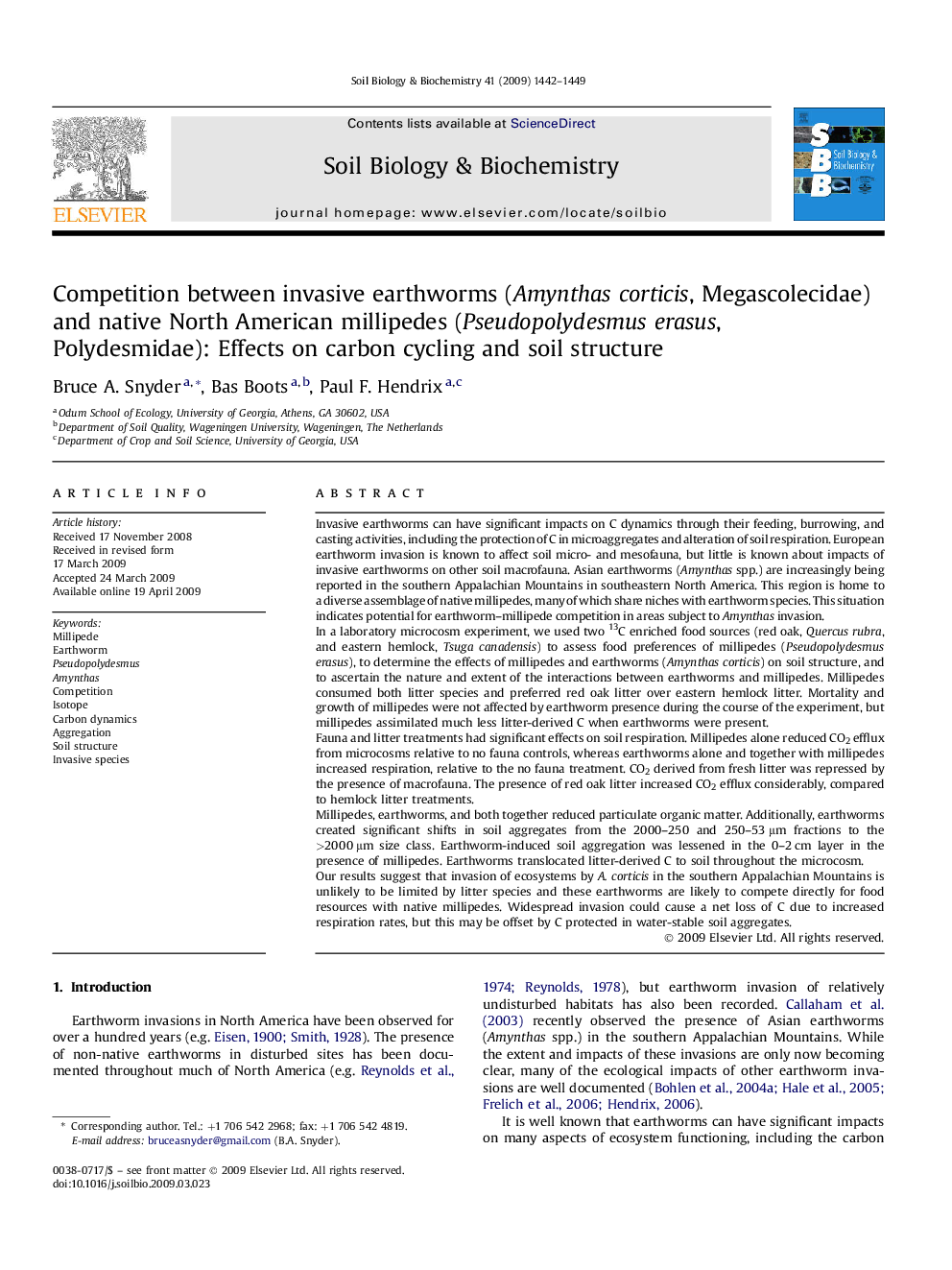| کد مقاله | کد نشریه | سال انتشار | مقاله انگلیسی | نسخه تمام متن |
|---|---|---|---|---|
| 2025206 | 1069988 | 2009 | 8 صفحه PDF | دانلود رایگان |

Invasive earthworms can have significant impacts on C dynamics through their feeding, burrowing, and casting activities, including the protection of C in microaggregates and alteration of soil respiration. European earthworm invasion is known to affect soil micro- and mesofauna, but little is known about impacts of invasive earthworms on other soil macrofauna. Asian earthworms (Amynthas spp.) are increasingly being reported in the southern Appalachian Mountains in southeastern North America. This region is home to a diverse assemblage of native millipedes, many of which share niches with earthworm species. This situation indicates potential for earthworm–millipede competition in areas subject to Amynthas invasion.In a laboratory microcosm experiment, we used two 13C enriched food sources (red oak, Quercus rubra, and eastern hemlock, Tsuga canadensis) to assess food preferences of millipedes (Pseudopolydesmus erasus), to determine the effects of millipedes and earthworms (Amynthas corticis) on soil structure, and to ascertain the nature and extent of the interactions between earthworms and millipedes. Millipedes consumed both litter species and preferred red oak litter over eastern hemlock litter. Mortality and growth of millipedes were not affected by earthworm presence during the course of the experiment, but millipedes assimilated much less litter-derived C when earthworms were present.Fauna and litter treatments had significant effects on soil respiration. Millipedes alone reduced CO2 efflux from microcosms relative to no fauna controls, whereas earthworms alone and together with millipedes increased respiration, relative to the no fauna treatment. CO2 derived from fresh litter was repressed by the presence of macrofauna. The presence of red oak litter increased CO2 efflux considerably, compared to hemlock litter treatments.Millipedes, earthworms, and both together reduced particulate organic matter. Additionally, earthworms created significant shifts in soil aggregates from the 2000–250 and 250–53 μm fractions to the >2000 μm size class. Earthworm-induced soil aggregation was lessened in the 0–2 cm layer in the presence of millipedes. Earthworms translocated litter-derived C to soil throughout the microcosm.Our results suggest that invasion of ecosystems by A. corticis in the southern Appalachian Mountains is unlikely to be limited by litter species and these earthworms are likely to compete directly for food resources with native millipedes. Widespread invasion could cause a net loss of C due to increased respiration rates, but this may be offset by C protected in water-stable soil aggregates.
Journal: Soil Biology and Biochemistry - Volume 41, Issue 7, July 2009, Pages 1442–1449